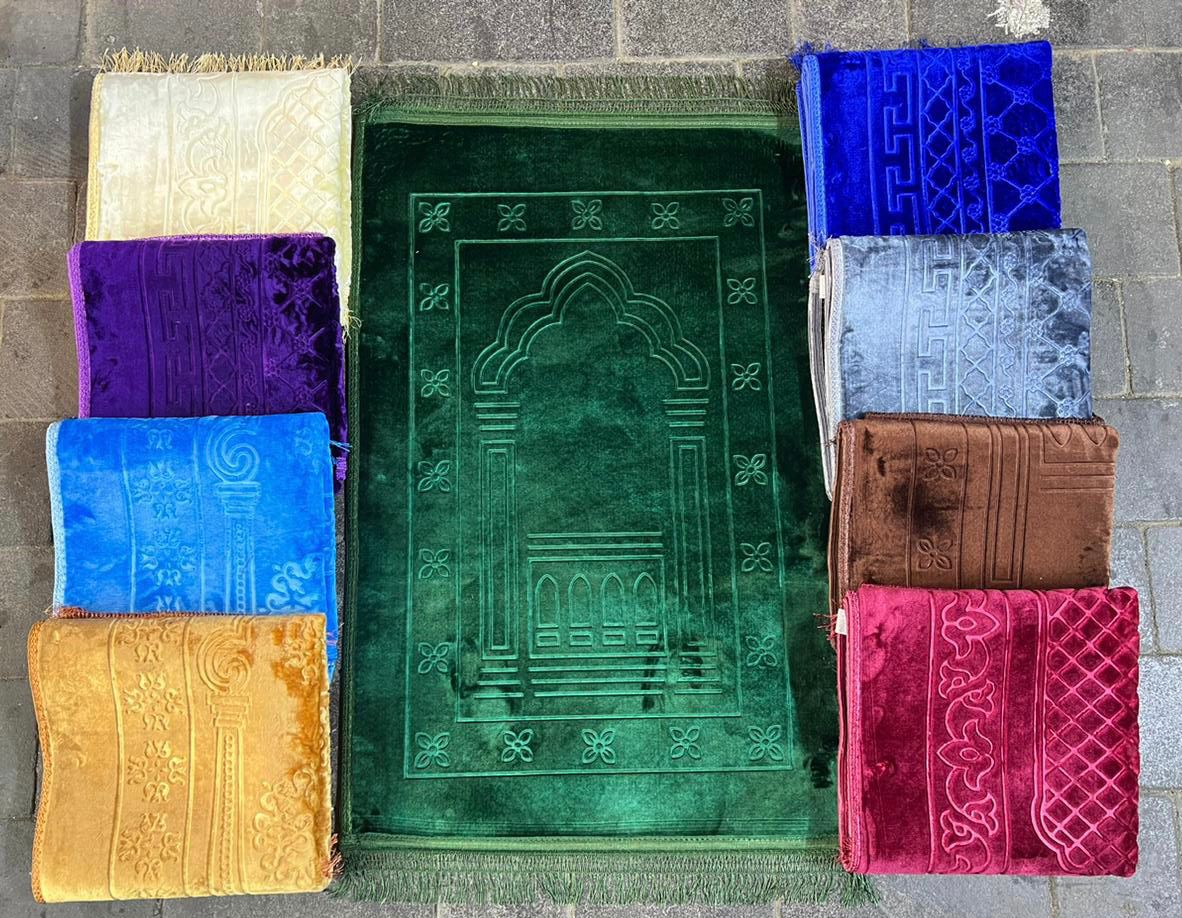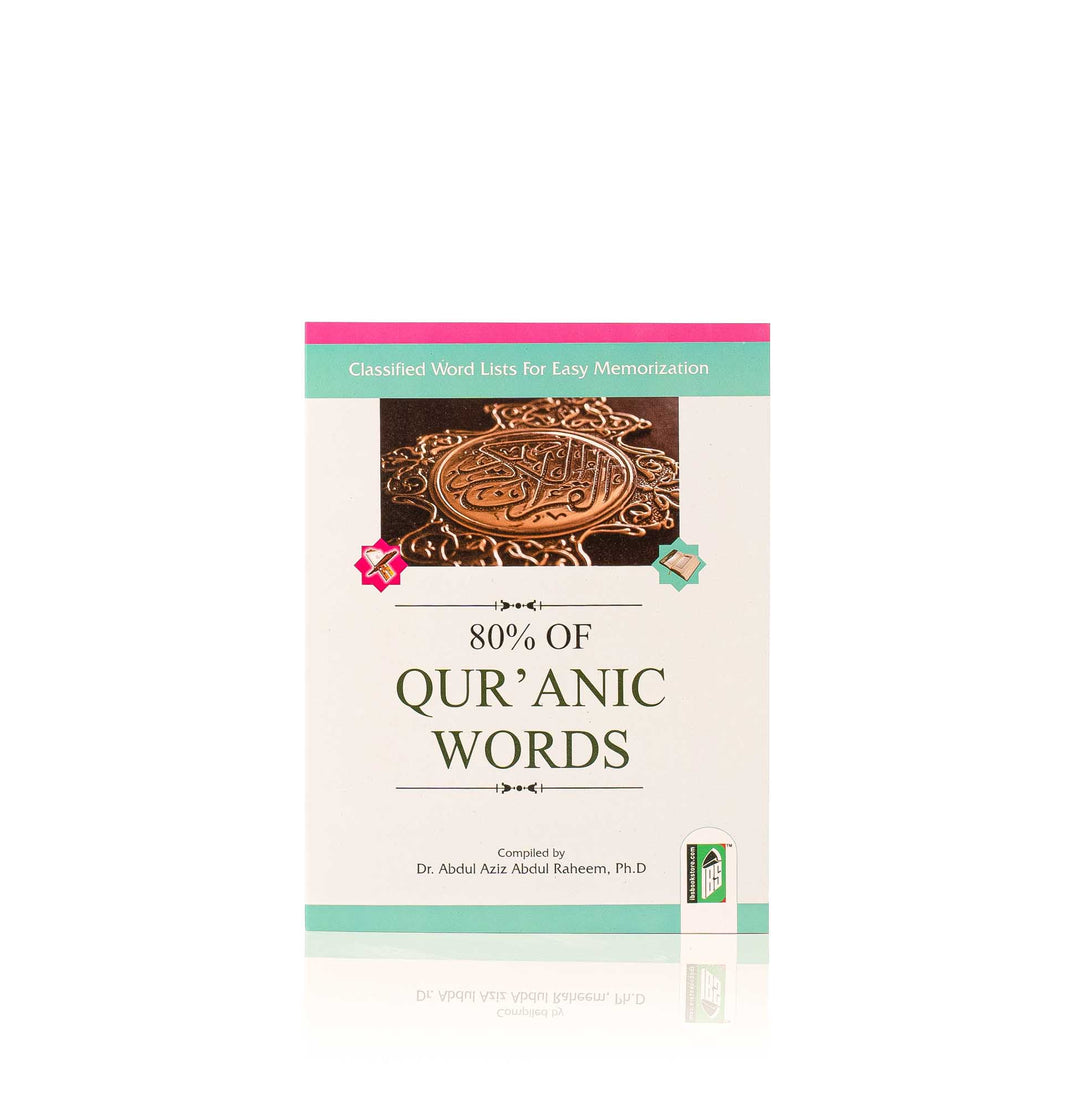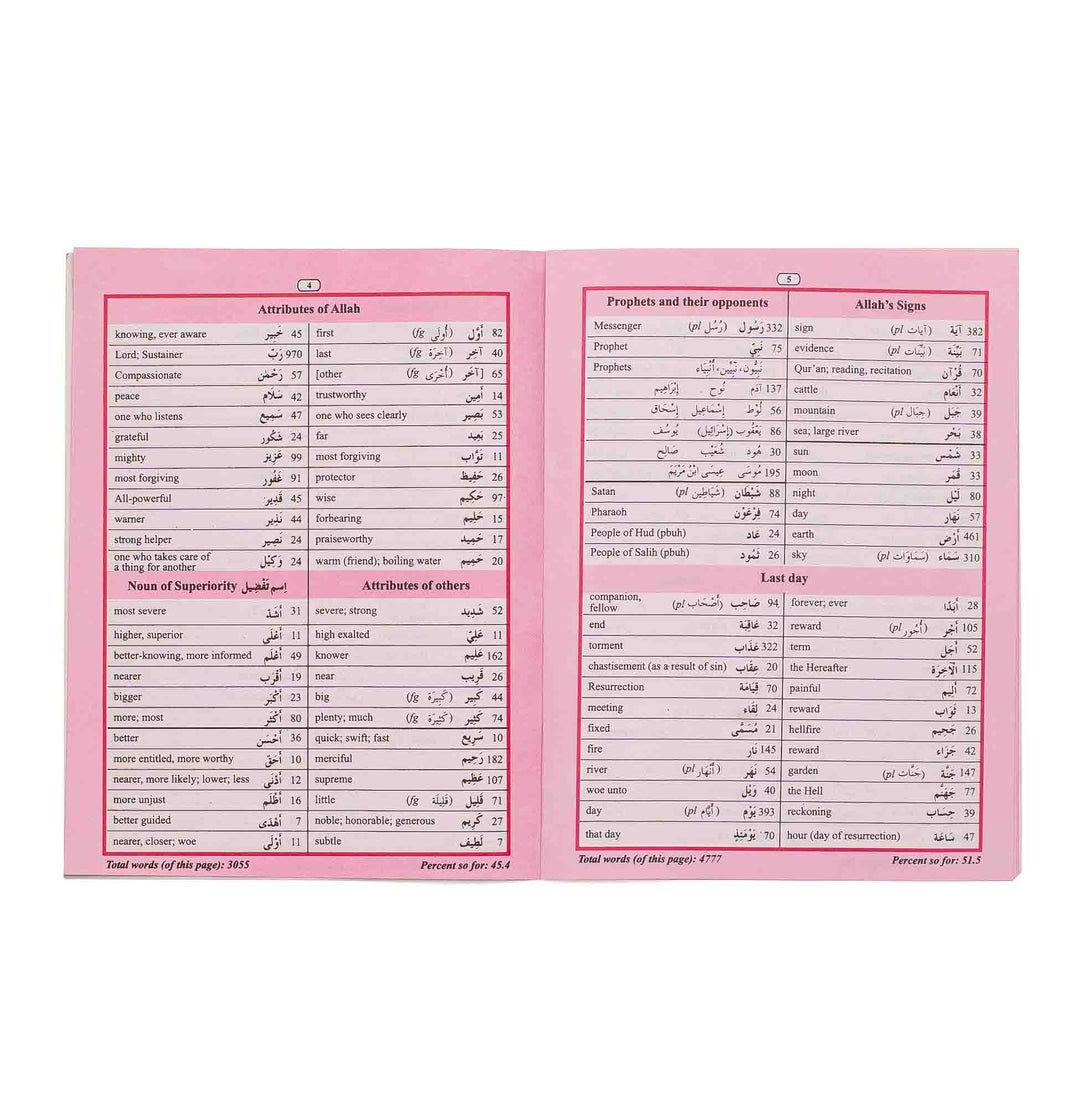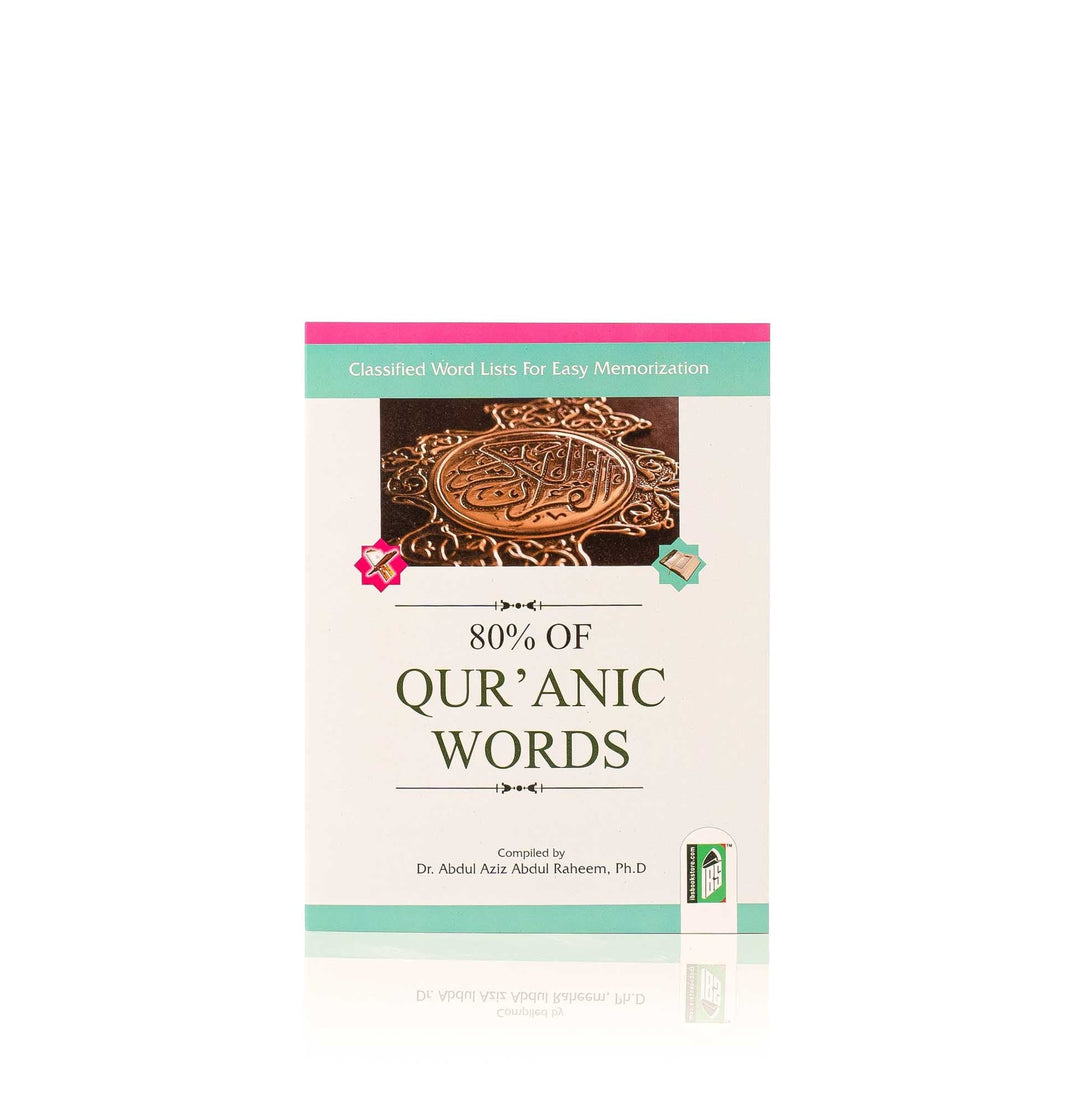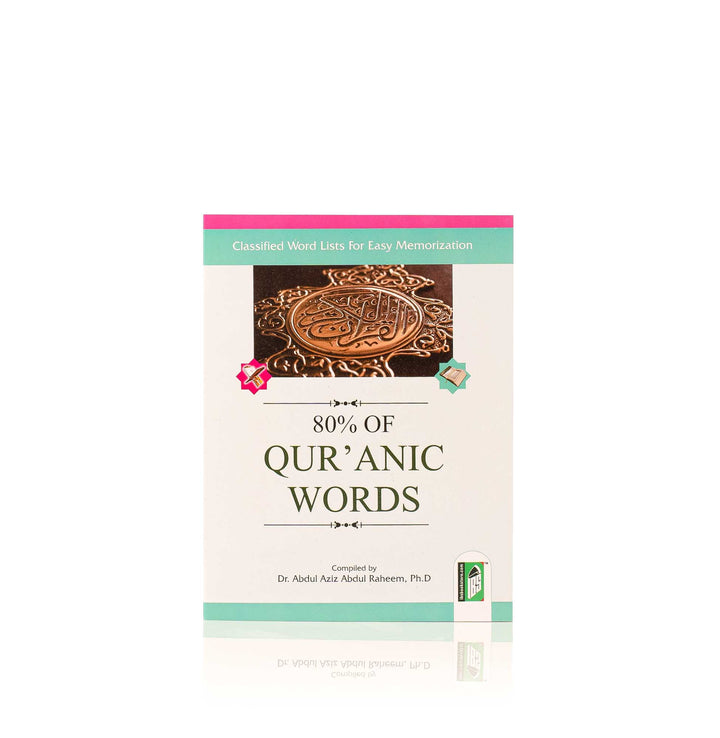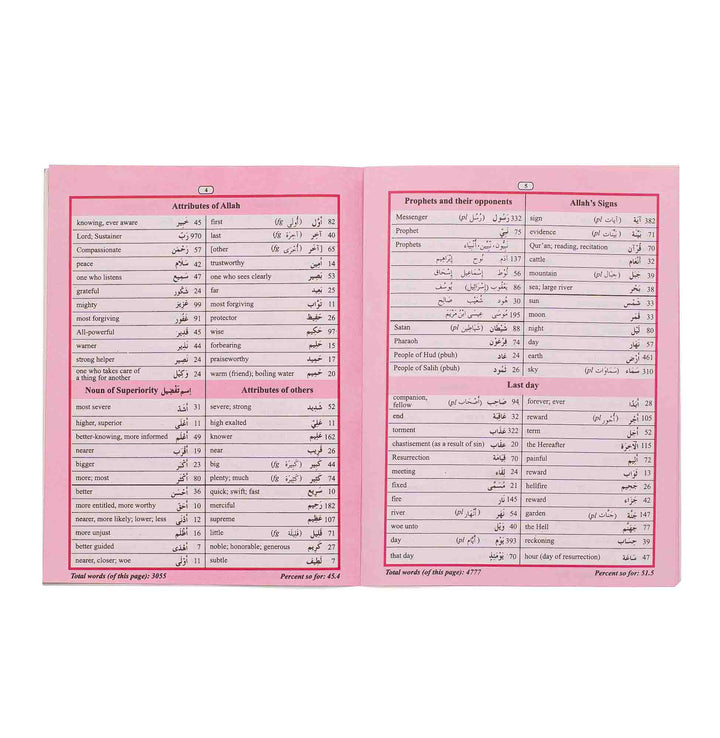Product Details
“This book will help to read and understand Quran in the following terms such as:
– Most words and their meanings
– Most commonly occurring word with meanings
– Understanding the grammar of Quran
| WEIGHT | 0.72 kg |
|---|---|
| DIMENSIONS | 23.8 × 18.3 × 0.2 cm |
| AUTHOR NAME(S) |
Dr. Abdul Aziz |
| PUBLISHED BY |
Islamic Book Service P. Ltd – India |
| ISBN |
9788172317782, 9788172317786 |
| BINDING TYPE |
Paper Back |
| PUBLICATION YEAR |
2006 |
| WEIGHT (KG) |
0.6 |
| PAGES |
1-20+4 |
| DIMENSIONS |
24cm X 18cm |
| PRINTING COLOUR |
2 Col. |
| BOOK LANGUAGE(S) |
English |
“PREFACE
All praise be to Allah, and may peace and blessings of Allah be upon his Prophet, Muhammad. Allah says very explicitly in His Book, “”(This is) a Book (the Qur’an) which We have sent down to you, full of blessings that they may ponder over its verses, and that men of understanding may remember (38:29).”” If we don’t understand the Book, how can we ponder on its verses!
Ahadith also emphasize the learning of the Qur’an. The Prophet of Allah, Muahammad, peace be upon him, said, “”The best among you are those who have learnt the Qur’an and teach it (to others)”” [Bukhari]This book is prepared to provide some help in fulfilling the above-mentioned objectives. Please keep the following points in mind while studying this book.
1. No. of words and their meanings: The words given in this book account for 82.6% (64282) of the total words (approx. 77800) of the Holy Qur’an.
2. Most common meanings: For each word, only the most common meanings are given. Some words may have other meanings too, depending upon their context. However, the number of such words is very small.
3. More than one meanings: When more than one distinctly different meanings of a word are given in the book, a semicolon is placed between the two meanings.
4. Most commonly occurring words: The words listed in the first three pages occur very frequently. Some of them occur in combination with each other. The constitute a whopping 41.5% (32263) of the total words
5. Word count on each page: At the bottom left of the page, total is provided for the number of times the words of that page have occurred in the Qur’an. The bottom right shows the percent of the total Qur’anic words that have been covered till that page.
6. Nouns and verbs: The number next to the noun (pages 4-7) or the verb (pages 8-18) shows the number of times that noun or the verb (in its various forms) has occurred in the Holy Quran.
7. Arrangement of word lists: Words given on pages 1 through 7 are arranged according to the topic. There are a few words given in this book which have occurred are very frequently in the Qur’an but could not be place under any of the topics. Such words are placed at the end of any of the word lists where space was available.
8. Arrangement of verbs: Verbs given on pages 8 through 18 are arranged according to their types. This is done to facilitate the learning of different types of verbs.
9. Vowel sign on the last letter: If the last letter of a word given in this book does not have a vowel sign (“”it indicates that any vowel sign can come on it depending upon the context in which that word is used. If () occurs before the word, then Tanween () is not used.
10. Arrangement of words: In almost every case, the words are arranged alphabetically to make the search easy.
11. Brief conjugation of verbs: For each verb, the past tense, the imperfect tense. The imperative, the active participle and the verbal noun are provided. It is assumed that based on this information, you can reproduce the whole verb table. However, for an average student, guidance from the teacher is necessary. Sample tables are provided at the end of this book.
12. Active and passive: For almost every verb type, samples of the () forms (active voice) are provided in the first line those of the() forms (passive voice) in the last.
13. Detailed conjugation of verbs: A star (*) is placed next to selected verbs. All the verbal forms of such verbs are provided in detail in a separate book, “”A Few Selected Verbs Used in the Holy Qur’an”.
14. Silat-ul-fe’l: Just like in any language, some verbs and nouns of action are always followed by a preposition. For example, believe in: () However, in some cases, a change in preposition may change the meanings too. For example, get; get in, get at; get by, get off, get on, etc. A list of some important verbs along with changing prepositions is provided on page no. 18.
15. Dual and Feminine forms: The word forms related to dual number and feminine gender are used sparingly in the Holy Qur’an. Therefore, these forms may be given less emphasis in the beginning stages.
16. References: Many books have been referred to in preparation of this book. Most important one among these is the book () prepared originally at the Arabic Language institute of King Saud University by Dr. Muhammad Hussain Abulfatooh and published by Maktaba Lebanon, Lebanon (1990). Among the references used for the English meanings of the words, “”Vocabulary of the Holy Qur’an””, by Dr Abdullah Abbas Nadwi is extensively used.
Many people have contributed in the compilation and review of this book. May Allah reward them all. May He also protect us from errors and forgive us if they have occurred in this book. If you find any error, please notify us so that it can be rectified in future editions. May Allah reward you for the help.
Country of Printing: India






